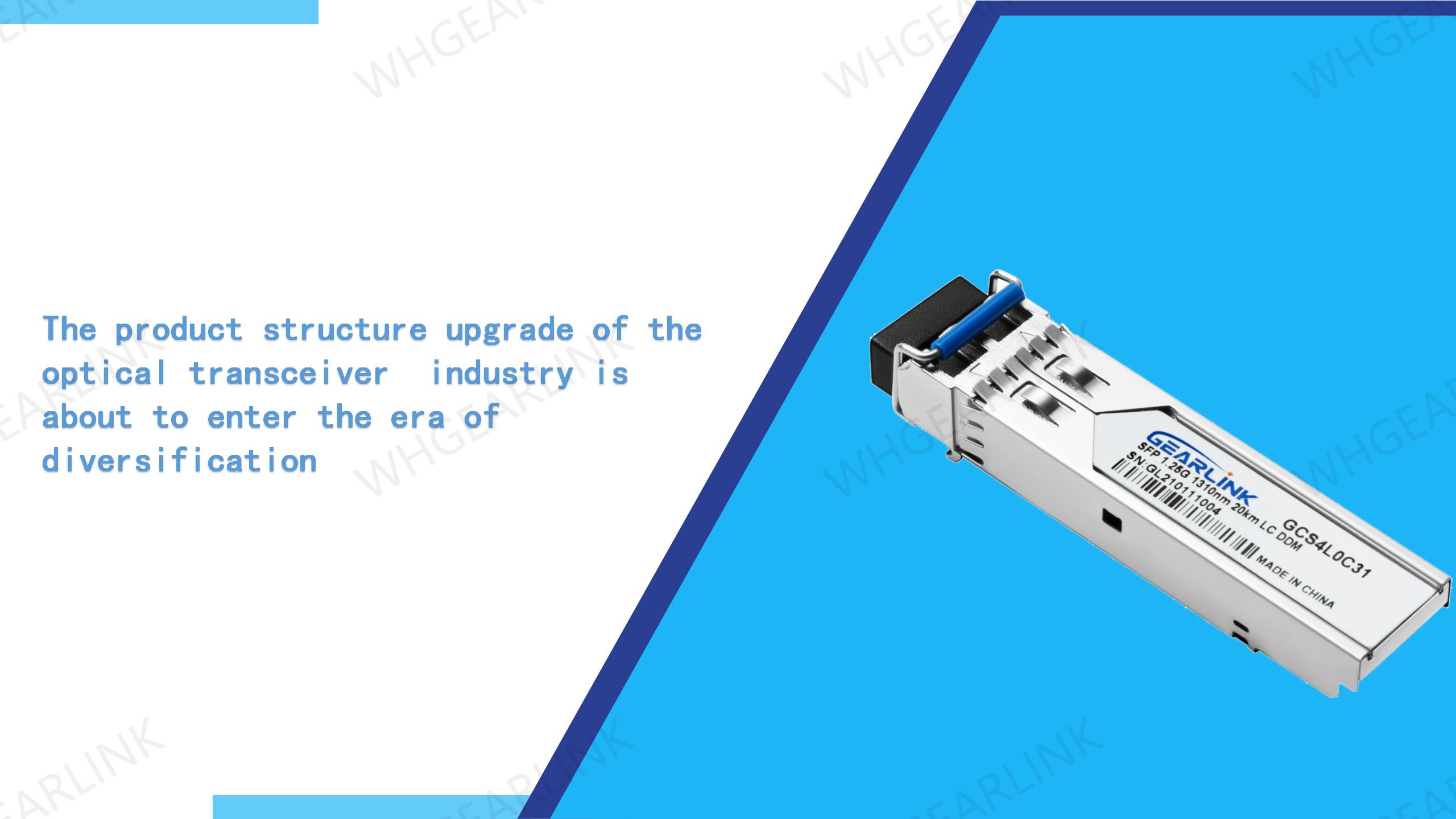
With the continuous development of information technology, the optical transceiver industry is in an important transition period. As consumers' demand for diversified products continues to increase, the optical transceiver industry is also constantly upgrading its product structure. In the future, the optical transceiver industry will continue to develop in the direction of diversification, high speed, and low power consumption to meet market demand. This article will analyze the development trend of the optical transceiver industry, and discuss the reasons and effects of its product structure upgrade.
With the continuous development of information technology, the optical transceiver industry is in an important transition period. As consumers' demand for diversified products continues to increase, the optical transceiver industry is also constantly upgrading its product structure to meet market demand. This article will analyze the development trend of the optical transceiver industry, and discuss the reasons and effects of its product structure upgrade.
According to data from market research institutions, the market size of optical transceivers is expected to reach US$17.6 billion in 2026. Among them, the demand for data centers, artificial intelligence, and cloud computing markets continues to grow, becoming the main driving force for the optical transceiver industry.
In addition to the growth of the market size, the optical transceiver industry is also facing many new challenges and opportunities. With the popularization of 5G networks and the development of the Internet of Things, the optical transceiver industry will usher in a broader market space. At the same time, the continuous emergence of new technologies, such as silicon photonics technology and photoelectric co-packaging technology will also drive the innovation and development of the optical transceiver industry.
With the changes in market demand, the product structure of the optical transceiver industry is also constantly upgrading. The traditional 1.25G and 10G optical transceivers can no longer meet the needs of the market, and consumers are increasingly demanding high-speed, low-power, and diversified products. Therefore, the optical transceiver industry needs to continuously introduce new products to meet market demand.
In addition, with the popularization of 5G networks, the optical transceiver industry will also usher in greater opportunities. The high-speed, low-latency, and large-capacity characteristics of 5G networks will drive the innovation and development of the optical transceiver industry. For example, 5G base stations require higher-speed optical transceivers to meet the needs of high-speed data transmission.
The product structure upgrade of the optical transceiver industry will have a profound impact on the entire industry. First of all, the introduction of new products will drive the innovation and development of the optical transceiver industry. For example, the emergence of 400G Ethernet will make the optical transceiver industry develop in the direction of higher speed and lower power consumption.
Secondly, the upgrading of product structure will drive competition in the optical transceiver industry. As market demand changes, more competitors will appear in the optical transceiver industry, and companies need to continuously improve product quality and technical level to maintain market competitiveness.
Finally, the upgrading of product structure will drive the overall development of the optical transceiver industry. With the continuous introduction of new products, the optical transceiver industry will develop in the direction of diversification, high speed and low power consumption, and make greater contributions to the development of information technology.
With the development of the optical transceiver industry, more and more application examples appear. For example, the 800G optical transceiver, which has been very popular in the past two years, can achieve a data transmission rate of up to 800Gbps, and at the same time, the power consumption is not high. optical transceivers are suitable for data centers, cloud computing, high-performance computing and other fields, providing better solutions for high-speed data transmission in these fields. At the 48th OFC exhibition in 2023, some manufacturers displayed the industry's latest high-speed interconnection 1.6T OSFP-XD DR8 optical transceiver in the data center, and demonstrated the most advanced optical transceiver optoelectronic core technology to global customers.
With the continuous development of information technology, the optical transceiver industry is in an important transition period. As consumers' demand for diversified products continues to increase, the optical transceiver industry is also constantly upgrading its product structure to meet market demand. In the future, the optical transceiver industry will continue to develop in the direction of diversification, high speed and low power consumption, and make greater contributions to the development of information technology.

